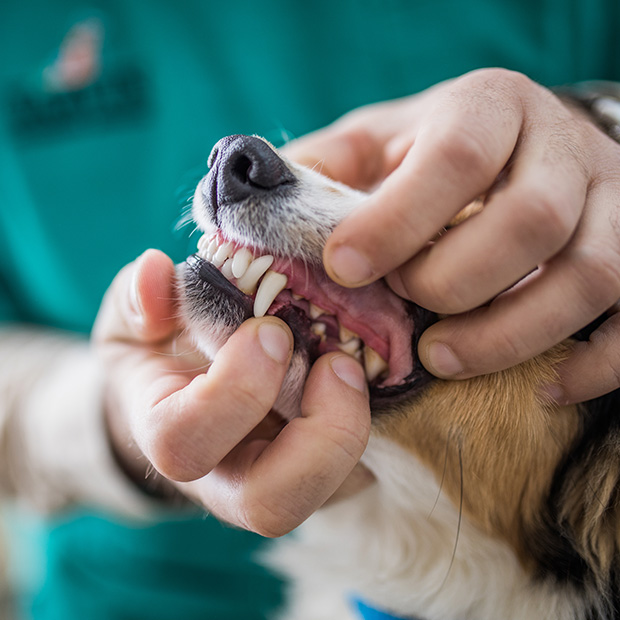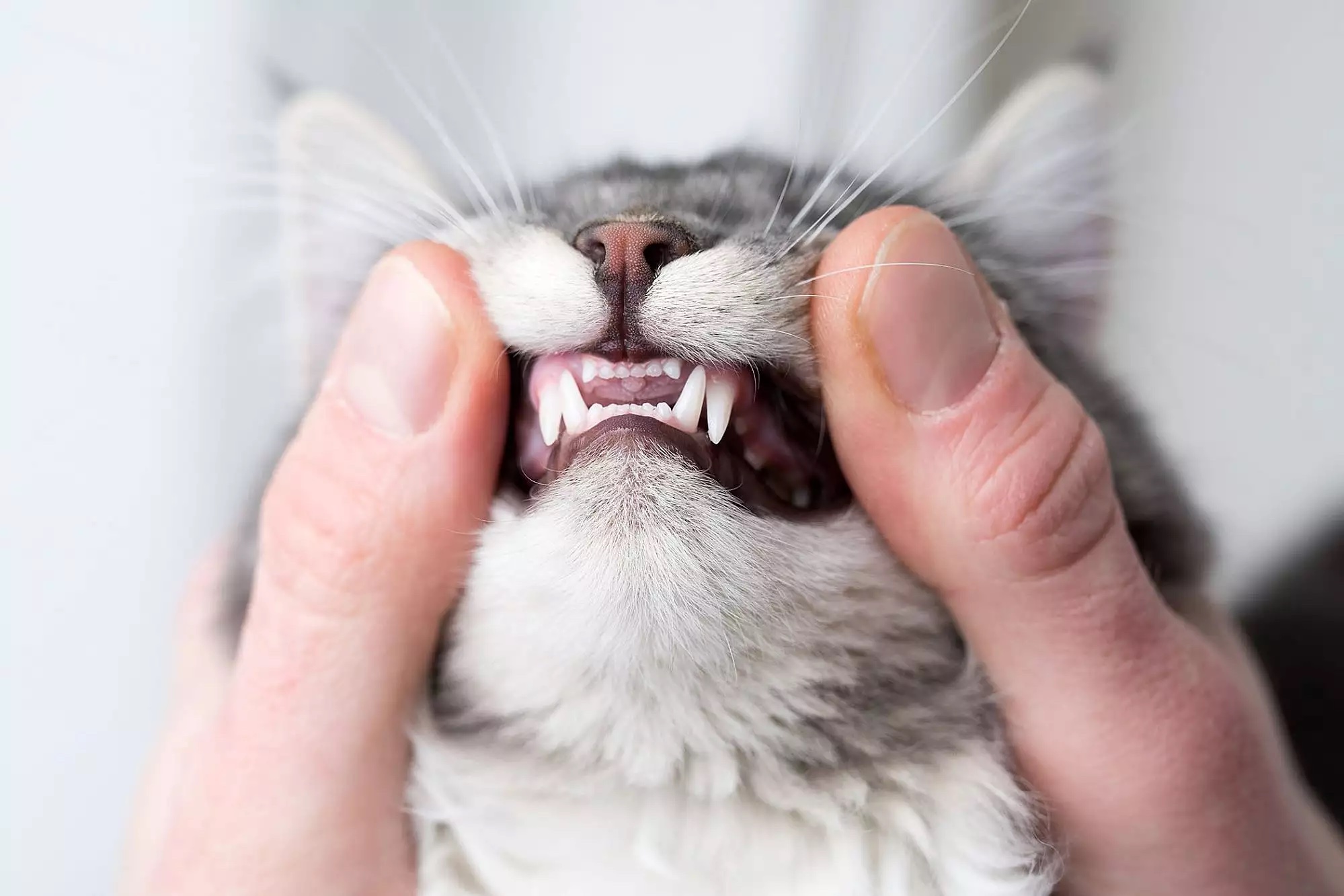It is surprising to know that the most common disease in dogs is periodontal disease. In fact, by age three, 70- 80% of dogs have periodontal disease. It is also surprising to know that most pets show very few symptoms of periodontal disease, even if the disease is advanced. That said, that “dog breath” is probably telling you something!
And what about our cats? They are affected by periodontal disease too. In fact, they can also suffer from an oral inflammatory condition known as stomatitis, and they can develop cavities at the gum line, also known as feline odontoclastic resorptive lesions.
What to do?! As with most health problems, prevention is best! Hands down, tooth brushing is most effective, but it also requires training, time, and the right patient. Not every dog or cat will accept tooth brushing, not every pet parent has the time. Using tooth brushing products made for pets and starting early when young is always best. There are other options that are less successful, but for some pets and their owners, still quite helpful. Stick with products that have the endorsement of VOHC, ( Veterinary Oral Health Council). These products have undergone 2 scientific studies that prove efficacy and range from chews to wipes, to water additives.
What about food? Unfortunately, feeding dry kibble versus canned food is not helpful in keeping teeth clean. If your veterinarian is recommending dental prophylaxis for your pet, it means that they are concerned about periodontal disease that cannot be remedied at home. This is important because periodontal disease is a progressive inflammatory process that causes the destruction of the tissues supporting the teeth, leading to pain and tooth loss. Additionally, in the case of feline odontoclastic resorptive lesions, teeth may fracture at the gum line, causing tooth root infection and pain. Cats with stomatitis can be so painful that they can become unable to eat properly and can become weak and debilitated.
What is done for pets during dental prophylaxis? Is it like us, humans, when we get our teeth cleaned? Yes and no:
Yes, in the sense that the teeth are cleaned, both on the tooth and under the gum line, followed by polishing. No, in the sense that dogs rarely get cavities but often have advanced periodontal disease that causes loose teeth that must be extracted. Cats with feline odontoclastic resorptive lesions and stomatitis may also need teeth extracted. Also, our pets require general anesthesia for dental, which has some risks. How risky is general anesthesia for dental prophylaxis? Here are some things to consider:
- Dental anesthesia requires a relatively low plane of anesthesia. In other words, we need our patients to be still.
- The modern approach to anesthesia focuses on using smaller amounts of a combination of drugs to avoid side effects.
- Anesthesia is tailored to the patient’s size, age, and health status. It is helpful to allow your veterinarian to perform pre-anesthetic blood work to determine organ function and health status.
- The anesthetized patient is monitored continuously, both by monitoring equipment and trained personnel, and is also supported by intravenous fluid therapy and warming devices.
- And finally, if you are wondering about statistics; in a study of 98,000 dogs undergoing dental anesthesia, 99.85 % of patients survived. Be aware of the most common disease in dogs and be aware of the unique dental problems that can occur in cats. Remember early intervention and prevention is key. We can help you figure out the best products and the best plan for dental health for your pets!



